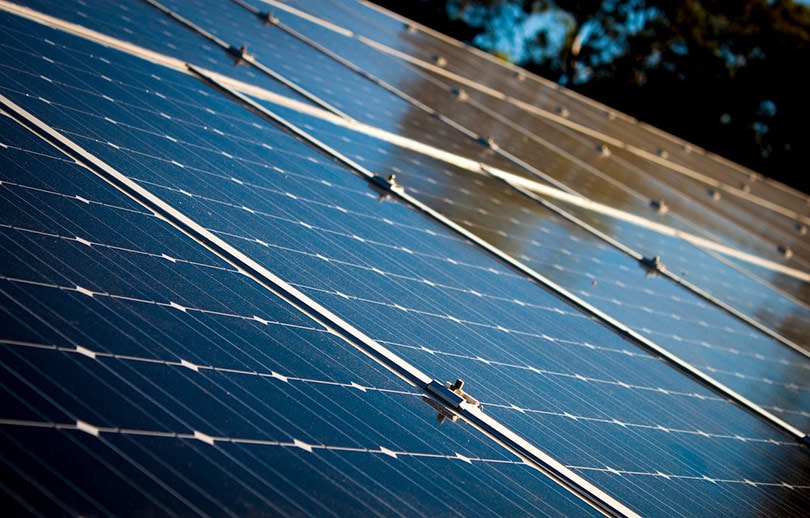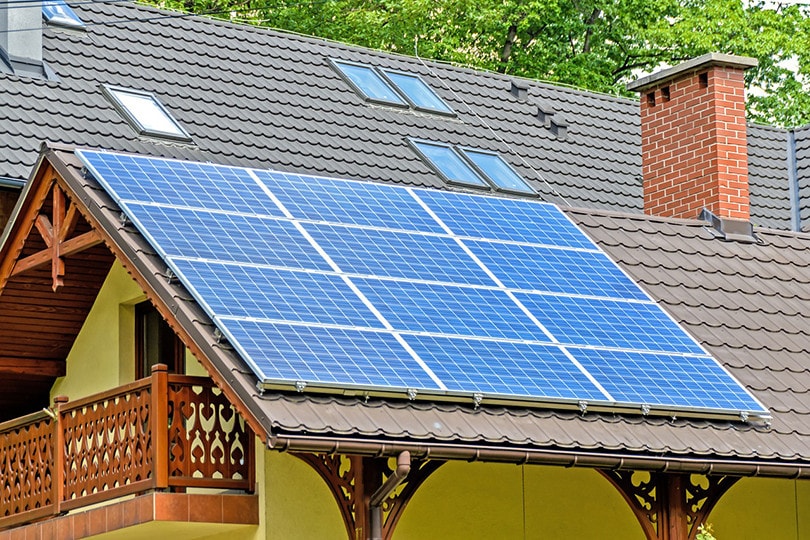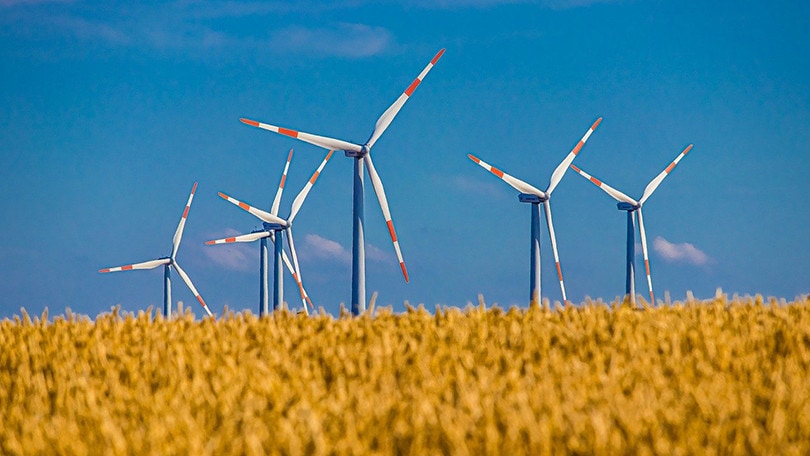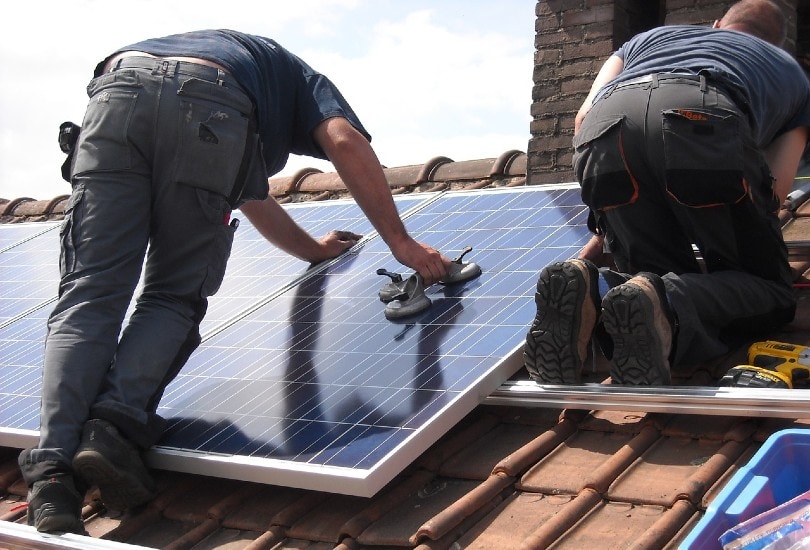10 Renewable Energy Myths and Misconceptions
-

- Last updated:

Renewable energy is a great way to reduce your bills and help the planet. Since this is a somewhat controversial topic, there are a bunch of myths and misconceptions about it. In this article, we’ll talk about 10 renewable energy myths and misconceptions. So, continue reading if you’re interested in finding out more about myths and misconceptions about renewable energy.

The 10 Biggest Renewable Energy Myths and Misconceptions
1. Renewable energy is expensive
People commonly have a misconception that renewable energy is more expensive than the energy created by fossil fuels. That is entirely false, and if you look at reports from the last couple of years you can see that renewable energy was among the cheapest energy sources in the world. Renewable energy prices are falling, whereas fossil fuel prices are constantly rising. Now is the perfect time for people to switch to renewable energy due to its affordability.

2. Renewable energy takes up a lot of land and space
Another common misconception is that renewable energy takes up a lot of land and space. You do indeed need land to set up renewable technology, but when you compare that with fossil fuels, you will see that it takes much less space than setting up fossil fuel energy.
Fossil fuel energy needs a place to extract resources, generate electricity, dispose of waste, etc., which takes up more space than just setting up renewable energy on one spot. Renewable energy doesn’t need space for extracting resources. Solar panels can simply be placed on roofs, for example, resulting in less space usage than fossil fuel-based energy.
3. Renewable energy cannot function when it’s dark or not windy
It is true that solar panels need the sun to work and that wind turbines need wind, but that doesn’t mean renewable energy cannot function when it’s dark or not windy. Technology is constantly improving and renewable energy has more storage options than ever, so t the energy produced during sunny or windy periods can be used even when it’s dark or not windy.

4. Renewable energy can power 100% of the world
Renewable energy cannot currently power 100% of the world, unfortunately. But, since the push for renewable energy has just begun and technologies are improving every day, this will certainly be possible in the future. So while the process will take time there’s no reason why renewable energy cannot supply all energy needs in the world, one day. By some predictions, it will take 30+ years for renewable energy to develop enough to provide energy to the entire planet.
5. Renewable energy takes too much time and effort
It’s a common myth that switching to renewable energy can be time and energy-consuming, especially to people unfamiliar with it. Still, instead of going solar all the way or turning your entire home off-grid, you can begin with smaller steps.
Anything from buying an automated thermostat to having a water filter can help save energy. So, there’s no need to feel overwhelmed around renewable energy, instead, try implementing incremental steps that can help you switch to total renewable energy later on.

6. Solar panels are expensive for an average household
Solar panels are indeed expensive, but they pay for themselves in the long run. Even if you have an average income, it’s worthwhile to invest in solar panels rather than pay regular electricity bills. Depending on your needs, solar panels typically cost around $15,000 to set up on average.
If your electricity bill is around $115 per month—which is the US average—it adds up to roughly $1380 annually. So, you could pay off your solar panels in 10 years or less and get free energy for life. Doesn’t that sound great? Solar panels are an expensive investment initially, but in the end, it’s well worth the price.
7. Wind turbines use more energy to create than generate
This is another common misconception, as the products used to create wind turbines require energy produced by hydrocarbons. On average, though, a wind turbine that’s properly located will make all the energy that it took to build it in three years. They are created using simple technology, so there are almost no maintenance costs. That’s why their resulting energy output will be much more significant than the energy it took to produce them in the first place.

8. The energy transition is expensive
When we talk about misconceptions about renewable energy, we have to mention that many people believe the energy transition from fossil fuels will be costly. Many detractors feel that society and government cannot bear all the costs of switching to renewable energy.
Investing in and transitioning to renewable energy can indeed be pricey. Still, renewable energy is the cheapest and the most efficient energy source in the world, and the benefits come with time and will undoubtedly pay off.
9. Hydropower is bad for people and the environment
Indeed, hydropower could potentially be bad for people and the environment. Still, such issues can be minimized or entirely resolved by having sustainable designs with proper focus and setup.
With that said, when planning a hydropower design, you should take things such as water quality, reservoir creation, and other factors into consideration. If appropriately installed and designed, hydropower will provide you with low-cost electricity that’s free from carbon and good for the environment. Also, it can be beneficial for flood control and fresh water supply.

Related Read: 10 Tidal and Wave Energy Facts and Statistics
10. Renewable energy cannot replace fossil fuels in transportation
Most people think that renewable energy is only significant for electricity and not useful for transportation. That’s simply not true, and renewable energy can also replace fossil fuels in transportation, but of course, it will take time and effort. For that to happen, we need more electric vehicles rather than having gasoline vehicles. Since renewable energy is developing each day and more people are choosing to switch to electric vehicles, it will certainly replace fossil fuels in transportation in the future.

What are the pros and cons of renewable energy?
Renewable energy, like any other energy type, has its pros and cons. The chart below will help you familiarize yourself with the benefits and disadvantages of renewable energy.
- Renewable energy cannot run out
- Renewable energy is low-maintenance
- Renewable energy will save you money in the long run
- Renewable energy leads to cleaner air and water
- Setups for renewable energy can be expensive
- Renewable energy relies on outside factors
- Renewable energy storage capabilities are limited
- Renewable energy is not always completely carbon-free
See Also: Renewable Energy in India Statistics: Percentage & Production Rates
Conclusion
Renewable energy is a fantastic option for everyone who loves to have their costs reduced while saving the environment. So, renewable energy will not only make your bills cost less, but it will also be more efficient. You can start small and don’t have to switch instantly, but baby steps will take you to a more sustainable home and better life quality.
See Also:
Featured Image Credit: StockSnap, Pixabay
Contents

